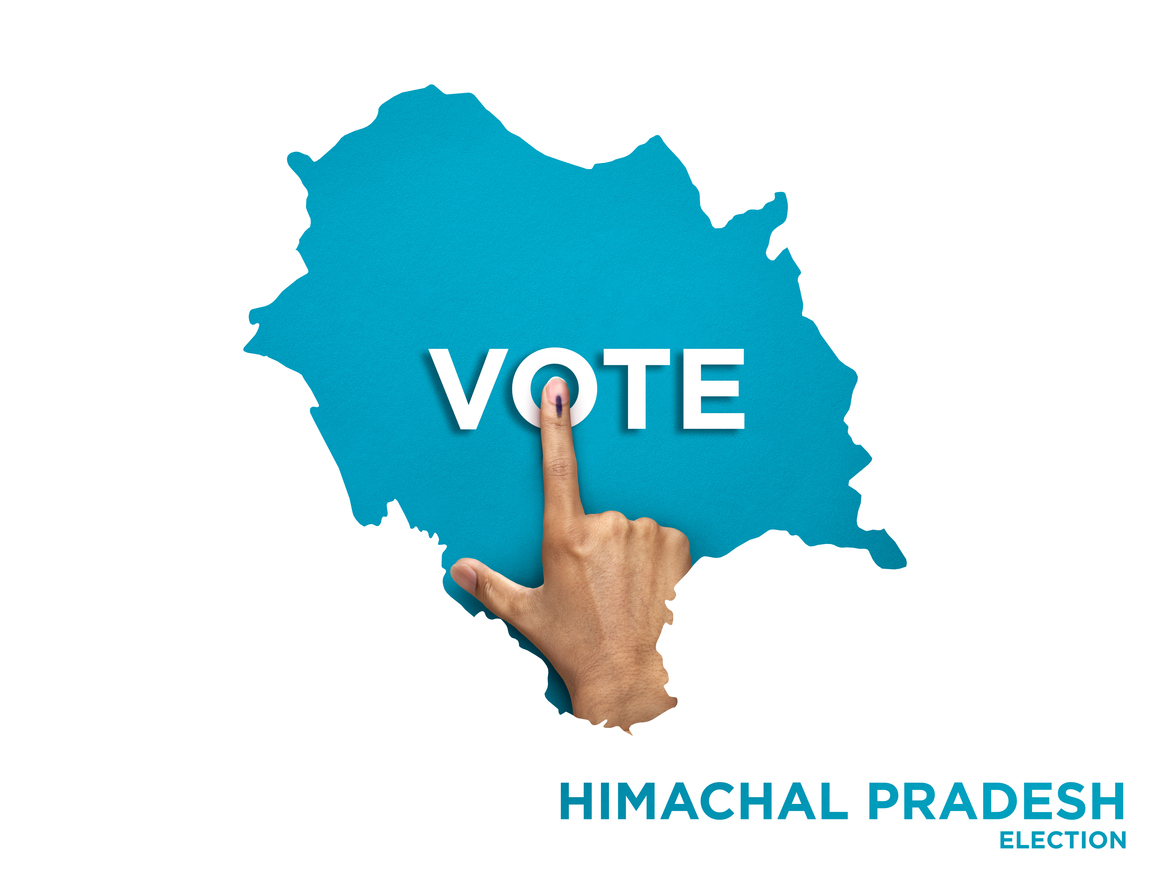Ahead of LS polls, 70343 licensed firearms deposited in Himachal Pradesh
Revealing this, a spokesperson of the Himachal Pradesh Election Department here on Tuesday, said: “Besides, these 3278 weapons have been impounded or cancelled.”
When it comes to distribution of tickets, parties ignore their female leaders with the excuse that they are not winnable candidates. It is sheer gender discrimination as a result of which women are missing from policies and programmes.

Himachal Pradesh Assembly Elections
Himachal Pradesh Assembly Elections: Women voters have outnumbered men in the Himachal Pradesh (HP) Legislative Assembly elections since 1998, but when it comes to the distribution of tickets, they have, so far, got a raw deal.
As the 2022 state polls are about two weeks away, political parties are leaving no stone unturned in wooing women voters. The ruling BJP has announced ‘Naari Ko Naman’ scheme under which a 50 percent waiver has been given to women travellers in bus fares of state-run transport service. As AAP has promised Rs 1,000 monthly allowance to all women above 18 years, Congress has gone a step ahead and promised Rs 1,500 per month.
But when it comes to female candidates in the poll fray, the BJP, this time, has given tickets to six women, while the Opposition Congress is putting its bet on just three women candidates.
Advertisement
Aam Admi Party (AAP) trying its hand in the state assembly elections for the first time has also given tickets to six women.
A BJP leader, Vandana Guleria, daughter of seven-time MLA and minister Mahender Singh Thakur, who lost to her brother in the race for a ticket from the Dharampur seat, questioned why women have to make a sacrifice in the political dynasty.
In 1998, the voting percentage of women was at 72.21%, surpassing that of men (70.26%) for the first time. A total of 13.01 lakh voted against 12.84 lakh men. There were 25 female candidates in the fray with five from Congress and four from BJP. Six women got elected to the House, which is the highest-ever in Himachal’s legislative assembly history.
In 2003, the women voting percentage soared to 75.92% against men’s 73.14%. A total of 15.34 lakh women cast their vote while the number of male voters was 15.22 lakh. That time, the number of women candidates also rose to 31 with the Congress fielding 10, the highest-ever by the grand old party, and BJP giving tickets to six women. Four women got elected to the assembly in the elections.
In 2007, the difference between women’s and men’s voting percentages rose to 5.65 points. A total of 16.78 lakh (74.01%) women cast their vote against 15.97 lakh men (68.36%). There were 25 women candidates with the BJP and the Congress fielding six each. Five of them were elected to the assembly.
In 2012, the difference in women’s and men’s voting percentages further rose to 6.81 points. A total of 17.03 lakh (76.20%) women cast their vote against 16.47 lakh men (69.39%). There were 34 female candidates with BJP fielding seven and Congress four. Three women candidates were elected to the assembly.
In 2017, the women voting percentage was 77.92%, while only 70.58% of men voted, a difference of 7.34 points.
A total of 19.15 lakh women voted against 18.13 lakh men. There were 19 female candidates while the BJP gave ticket to six and Congress relied on just three women leaders. In the elections, eleven woman candidates forfeited their deposit while four were elected to the Assembly, they were Asha Kumari from Dalhousie, Sarveen Choudhary from Shahpur, Reeta Devi from Indora, and Kamlesh Kumari from Bhoranj.
Later, Reena Kashyap also entered the House after winning from Pachhad by-poll on the saffron party’s ticket.
Ekal Naari Shakti Sangathan convener Nirmal Chandel said, “Political parties ignore their woman leaders with the excuse that they are not winnable candidates. It is sheer gender discrimination. As a result of this, women are missing from policies and programmes. We have been demanding 33 percent reservation in tickets from political parties for over a decade.”
It was in 1972 when women MLAs could reach the House. Four of seven women candidates were elected.
There was no woman candidate in 1951, the first state polls. In 1967, the Congress took a lead by fielding two woman candidates, from Baijnath and Kutlehar. However, both of them lost.
“Prominent political parties lack the will to give tickets to their female leaders. Women leaders want to contest polls, but it is not easy to contest as an Independent,” said social activist Rattan Manjari, who runs Mahila Kalyan Parishad (MKP) and is fighting for tribal women’s land rights. She has been a Zila Parishad member thrice and unsuccessfully contested the 1998 state polls.
She lamented that women voters also ignore women leaders due to lack of political literacy. But she said she was hopeful of a change in the mindset of the new generation. She was confident that this time around, women voters will side with women candidates.
Advertisement